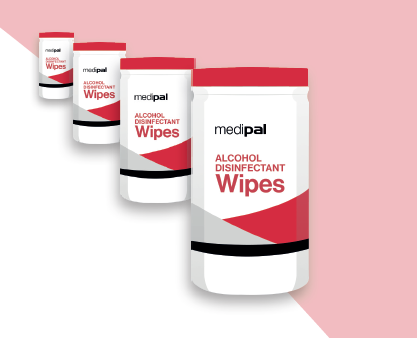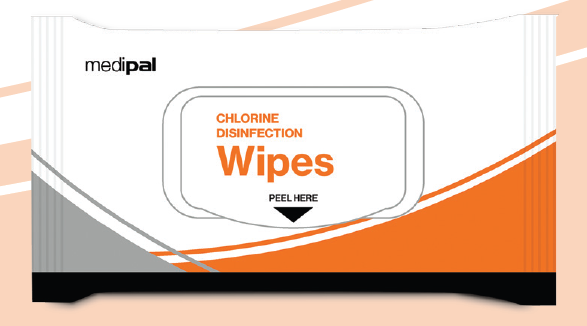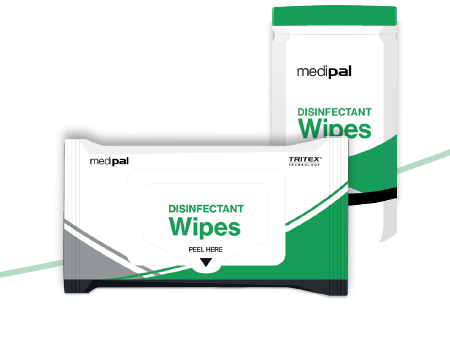Executive Summary
This white paper clarifies how to make accurate, harmonised efficacy claims for healthcare disinfectant wipes. It summarises the EN standards that underpin bactericidal, yeasticidal/fungicidal, virucidal, mycobactericidal, and sporicidal claims, explains the Phase 2 Step 1 (suspension) and Phase 2 Step 2 (carrier/surface) testing framework, and provides practical guidance on realistic contact times for wipes in clinical settings. It also demonstrates why ultra-short claims (e.g., “kills in 10 seconds”) are not reliable.
By focusing on wipes (not sprays), this paper equips infection prevention and control (IPC) practitioners with the tools to challenge misleading claims and make informed purchasing decisions.
1. The EN Framework – and Why It Matters for Wipes
EN (European Norm) standards, are technical documents published by the European Committee for Standardisation (CEN) and other organisations that outline requirements for products, services, or processes, promoting safety, quality, and interoperability across Europe.
The EN 14885:2022 outlines the required framework for assessing the efficacy of chemical disinfectants and antiseptics.
Key things to look for in test reports:
- Results must specify the exact EN standard, organism(s), test type (suspension vs carrier), soiling conditions (clean vs dirty), contact time, temperature, and log reduction achieved.
- Suspension tests (Phase 2, Step 1) show a product’s intrinsic activity in a liquid medium.
- Carrier tests (Phase 2, Step 2) model real-life use by testing performance on surfaces.
- For wipes, carrier tests (e.g., EN 16615 for bactericidal/yeasticidal efficacy, EN 17846 for sporicidal wipes) are essential because they incorporate mechanical wiping and transfer assessment.
- Both suspension and carrier testing are needed to demonstrate robust claims.
2. Must-Have EN Standards for Healthcare Wipes
Below are the core standards for disinfectant wipes used on non-porous environmental surfaces in healthcare. Suspension tests provide intrinsic data; wipe-specific carrier tests demonstrate practical performance.
Claim Type | EN Standards for Wipes in Medical Area | Role | Typical Contact Time Band (Practice) |
Bactericidal | EN 13727 (suspension) + EN 16615 (4-field) | Intrinsic + wipe-specific test | 1-60 min depending on method, ≤5 min typical for healthcare* |
Yeasticidal | EN 13624 (suspension) + EN 16615 (4-field) | Intrinsic + wipe-specific test | 1-60 min depending on method, ≤5 min typical for healthcare* |
Fungicidal | EN 13624 (C. albicans + A. Brasiliensis) (suspension) | Instrinsic fungicidal activity | ≤5 min typical for healthcare |
Virucidal | EN 14476 (suspension) | Intrinsic virucidal activity | ≤5 min typical for healthcare |
Mycobactericidal (TB) | EN 14348 (suspension) | Intrinsic activity vs mycobacteria; no wipe-specific method | 60 min obligatory (standard conditions), ≤5 min typical for healthcare |
Sporicidal (C. diff) | EN 17126 (suspension) + EN 17846 (4 field) | Intrinsic + wipe-specific test | <5 min typical for healthcare |
*minimum contact time based on combined claim
For surface disinfectant wipes intended to be used on non-invasive medical devices, the end user should ensure the product carries a valid CE mark and complies with the requirements set out in the Medical Device Regulation (EU) No. 2017/745.
3. Why “Kills in 10 Seconds” or “30 Seconds” Is Usually Misleading for Wipes
Many marketing claims use ultra-short times to attract attention, but they often don’t reflect clinical performance. Reasons include:
- Method Constraints: EN standards specify contact-time ranges.
- EN 13727 (bactericidal) – up to 60 min depending on method, ≤5 min typical for healthcare
- EN 13624 (yeasticidal) – up to 60 min depending on method, ≤5 min typical for healthcare
- EN 14476 (virucidal): ≤5 min is typical in healthcare.
- EN 14348 (mycobactericidal): obligatory 60 min, where being used to demonstrate mycobactericidal/tuberculocidal activity, for medical area surface disinfection, contact times shall be adapted according to the principles described in EN 13727 and EN 13624.
- EN 16615 (4-field sporicidal wipe): 1-60 min depending on method, ≤5 min typical for healthcare.
- EN 17846 (4 field sporicidal wipes): 1-60 min depending on method, ≤5 min typical for healthcare.
- Soiling Impact: Dirty conditions (with bovine albumin and erythrocytes) significantly slow kill kinetics. A product claiming “10-second efficacy” is almost always based on clean suspension conditions, which, depending on use is not representative of the products intended use.
- Mechanical Factors: Wipes must keep surfaces visibly wet for the entire required contact time. In real-world use, factors such as evaporation, the size of the area being wiped, and ventilation mean that ultra-short contact times are often unrealistic.
- Transfer & Spread: Wipes can transfer organisms. EN 16615 and EN 17846 specifically measure this risk; suspension tests cannot.
- Organism Differences: Marketing often highlights the fastest kill (e.g., an easy-to-kill bacteria) rather than harder targets like spores, non-enveloped viruses, or mycobacteria, which usually require longer contact times.
Rule of thumb: If a product headlines a “10-second kill,” ask for the test method, organism, soil condition, and where available: whether a wipe-specific carrier method was used under those parameters, as not all tests have a wipe-specific counterpart (e.g., virucidal claims).
4. Best Practice for Presenting Claims
To ensure accuracy and trustworthiness, disinfectant wipe manufacturers should:
- Always name the EN standard (e.g., EN 16615:2015).
- List all organisms tested, especially clinically relevant ones.
- State contact times as validated, not optimised marketing numbers.
- Include soiling conditions (clean vs dirty).
- Provide the log reduction as defined by the test standard.
5. Glossary of Core EN Standards for Wipes
EN Standard | Scope |
EN 16615 | 4-field wipe test; bactericidal/yeasticidal; assesses kill and transfer. |
EN 13727 | Suspension; bactericidal activity. |
EN 13624 | suspension, yeasticidal/fungicidal activity. |
EN 14348 | Suspension; mycobactericidal in medical area up to 60 mins, usually ≤5 mins in medical area (per inferred rules for surface disinfectants from EN 13727/ EN 13624). |
EN 17126 | Suspension; sporicidal incl. C. diff (intrinsic). |
EN 17846 | 4-field wipe test; C. diff sporicidal wipes on non-porous surfaces. |
6. Quick-Reference Checklist: How to Read Disinfectant Wipe Claims
Question to Ask | Why It Matters |
Which EN standard? | Reference the test standard to define claims. Standards provide the framework for the claims you can make (e.g., “bactericidal”). Simply stating results without the standard does not give enough information – claims must align with the testing schedule and requirements outlined in the relevant standard. |
Suspension or carrier test? | Carrier tests (e.g., EN 16615, EN 17846) simulate real use; suspension tests alone are insufficient for wipes where a wipe-specific method is available. Not all claims (e.g., virucidal, mycobactericidal, fungicidal) have a wipe-specific counterpart, but carrier testing should be referenced where available. |
Which organisms? | Claims may highlight only easy-to-kill organisms; harder ones (spores, TB, non-enveloped viruses) tend to be more challenging to kill. |
Clean or dirty conditions? | Results in clean conditions should be interpreted in context. Testing in “dirty” conditions is generally used to demonstrate Combined cleaning and disinfection, but may not be relevant for products designed solely for disinfection. |
Contact time validated? | Marketing often shows shortest possible time, not realistic or required times. |
Log reduction achieved? | Ensure the product meets the required log reduction. The required log reduction depends on the EN standard being used. For example, a pass for sporicidal activity is defined as ≥4.0 log reduction. Claims should only be based on what the test report demonstrates has been achieved. |
Key Takeaways for Healthcare Professionals
- Ask detailed questions: Which EN, which organism, which soil conditions, and which contact time?
- Look for wipe-specific validation: EN 16615 and EN 17846 are critical for wipes.
- Beware of sub-30s claims: They’re rarely tested according to test method guidance.
- Push for transparency: Accurate data protects patients and supports best practice.
- For non-invasive medical devices: check additional requirements are met, such as CE marking.






